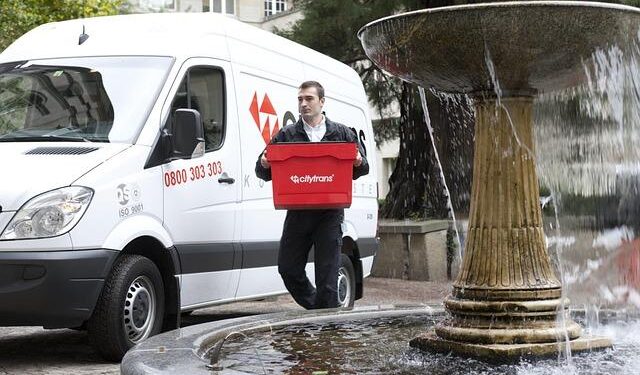Table of Contents
Introduction: The Anatomy of a Message That Saves Lives
The article will commence with a moment of reflection on a slogan that has permeated the cultural lexicon: “Friends Don’t Let Friends Drive Drunk.” Initially, this phrase is presented through the lens of professional admiration—a seemingly perfect confluence of simplicity, rhythm, and social insight.
This opening serves to establish a baseline understanding of persuasive messaging, one rooted in the appreciation of cleverness and creative flair.
It sets up the narrator’s initial, yet fundamentally incomplete, grasp of what makes such a message truly effective.
This initial admiration, however, will be revealed as a surface-level interpretation.
The article’s central thesis posits that the most potent public safety slogans are not mere flashes of creative genius but are, in fact, meticulously engineered “narrative keys.” These keys are designed with scientific precision to unlock complex psychological and social mechanisms at the critical moment of decision-making.
The narrative will then promise to guide the reader through a personal journey of discovery, deconstructing the science, history, and raw human element behind these life-saving messages.
The journey is framed through the narrator’s personal and professional arc.
The audience is introduced to a seasoned advertising copywriter, confident in their ability to persuade, who finds their expertise humbled by the immense challenge of crafting a genuinely effective anti-drunk driving message.
This personal narrative—a progression from professional confidence to humbling struggle to profound enlightenment—mirrors the evolution of the public health field itself.
The story of creating a slogan becomes a microcosm for the broader shift in public safety campaigns, moving from simple, intuitive warnings to sophisticated, evidence-based interventions that acknowledge the messy, often irrational, reality of human behavior.
Section 1: Forging the Narrator’s Identity: The Reluctant Messenger
Narrator’s Professional Background
The narrator is established as a successful copywriter, a veteran of the commercial advertising world.
Their professional life is governed by the principles of consumer desire, brand voice, and market appeal.
They are adept at using language to sell products, create brand loyalty, and influence purchasing decisions.
Their toolkit is filled with strategies for A/B testing ad copy, crafting compelling calls to action, and tapping into aspirational wants.
In this world, persuasion is a sophisticated game of wit, emotional resonance, and a deep understanding of what makes people want something.
This background provides the narrator with a strong, but ultimately flawed, foundation, as they equate the challenge of preventing a dangerous behavior with that of promoting a desirable product.
The Inciting Incident
The sterile world of commercial persuasion is abruptly pierced by a personal crisis.
A close friend is arrested for driving under the influence (DUI) after a casual weekend gathering.
The incident is not a front-page tragedy—there is no spectacular crash, no loss of life.
Instead, it is a quiet, deeply unsettling unraveling.
The late-night phone call from a holding cell, the palpable shame and regret in the friend’s voice, and the subsequent cascade of legal and financial consequences—lawyers, fines, a suspended license—force the narrator to confront the issue not as an abstract social problem but as an intimate reality.
This personal connection, devoid of sensationalism but rich in mundane, grinding consequence, becomes the catalyst for their involvement.
It provides a powerful, intrinsic motivation to apply their professional skills to a cause that now has a familiar face.
Taking on the Challenge
Driven by this experience, the narrator volunteers their services to a local traffic safety coalition.
This organization is portrayed as earnest and dedicated but chronically underfunded and struggling to make an impact against a deeply entrenched cultural behavior.
The narrator approaches this pro-bono project with a degree of professional arrogance.
They believe their extensive experience in the high-stakes world of commercial advertising makes them uniquely qualified to solve what they perceive as a straightforward communication problem.
They are confident they can quickly devise a “killer” slogan, a clever turn of phrase that will cut through the noise and change behavior where the coalition’s previous, more homespun efforts have failed.
Initial Research and Baseline Understanding
The narrator’s first professional step is to conduct a historical review of the field, seeking inspiration from the giants of anti-drunk driving advocacy.
This initial research phase solidifies their belief that success lies in finding the right emotional hook and a memorable tagline.
They are immediately impressed by the legacy of Mothers Against Drunk Driving (MADD).
They learn of its origins, born from the profound grief of Candy Lightner after her 13-year-old daughter was killed by a repeat-offender drunk driver.1
The narrator notes MADD’s incredible influence, which helped enact over 1,000 new laws and was associated with a significant decrease in drinking-driving fatalities.1
A key detail that catches their copywriter’s eye is MADD’s deliberate name change in 1984 from “Mothers Against Drunk Drivers” to “Mothers Against Drunk Driving”.3
This is an early, subtle lesson in the importance of targeting the behavior, not demonizing the individual, a nuance they file away as a clever branding tactic.
Next, they study the iconic work of the Ad Council.
The 1983 campaign tagline, “Drinking & Driving Can Kill A Friendship,” is admired for its unique angle, targeting the social fabric rather than just the driver.4
They see the evolution to the even more powerful “Friends Don’t Let Friends Drive Drunk” in 1990 as a stroke of genius.
This slogan became the most recognized in the movement’s history and was instrumental in a dramatic one-year drop in alcohol-related fatalities.4
To the narrator, these campaigns are masterpieces of concise, emotionally resonant copywriting.
Finally, their research uncovers the story of the “designated driver.” They are surprised to learn that this concept was not a spontaneous cultural phenomenon.
It was, in fact, a strategic social engineering project, imported from Scandinavia by the Harvard School of Public Health in 1988 and deliberately seeded into American culture through Hollywood television shows.5
Over 160 prime-time programs incorporated the concept into their scripts, rapidly normalizing the behavior and making “designated driver” a household phrase.5
This discovery is the first crack in the narrator’s simplistic view.
It suggests that these powerful social shifts are not just the result of a great slogan but are meticulously planned and executed interventions.
This initial phase of research establishes the narrator’s starting point: a firm belief that the path to success lies in crafting a brilliant, emotionally charged, and memorable phrase, following the blueprint of the legendary campaigns of the past.
They see the history of the movement as a highlight reel of great ads, missing the deeper, systemic forces at play.
The progression from a polite British warning in the 1960s—”Don’t ask a man to drink and drive” 6—to the active, peer-driven intervention of “Friends Don’t Let Friends Drive Drunk” 4 is seen not as an evolution in strategy, but as an increase in creative boldness.
The critical shift was from a passive, individual warning to an active, collective responsibility.
The early UK campaign placed a gentle burden on others, while MADD reframed the issue as a violent crime, raising the stakes from a personal mistake to a public menace.1
The Ad Council then weaponized friendship, turning peers into the first line of defense and making intervention a social duty.4
Finally, the designated driver campaign institutionalized that duty, creating a formal, respected social role with a clear, positive action.5
This entire arc demonstrates a strategic deepening of responsibility within the social fabric, a systemic evolution that the narrator, focused solely on the final slogan, initially fails to comprehend.
Section 2: The Core Struggle: When “Clever” Collides with Reality
The First Failed Attempts
Armed with a surface-level understanding of historical successes and brimming with professional confidence, the narrator develops their first slate of slogans.
They present these ideas to the coalition and test them in focus groups, fully expecting to be lauded for their creativity and insight.
The concepts are witty, punchy, and designed to be memorable—the hallmarks of good commercial advertising.
However, they fall disastrously flat.
- An attempt at a modern, witty slogan, “Don’t Be a Dummy. Get a Lyft.,” is met with coldness. Focus group participants find it glib and dismissive. It trivializes a life-or-death decision and makes the audience feel condescended to, rather than empowered.
- A hard-hitting, fear-based slogan, “One More for the Road… to the Morgue.,” fares even worse. It is perceived as overly aggressive and hyperbolic. The universal reaction is a psychological shrug, a defensive dismissal encapsulated by the thought, “That’s for reckless people, not me.” The message is so extreme that it lacks personal relevance.
The Humbling Feedback
The feedback from the focus groups is a brutal professional reckoning.
The narrator’s carefully crafted messages either fail to connect, with participants feeling they are not the intended audience (a failure of perceived susceptibility), or they trigger a defensive backlash, with participants feeling attacked and resentful.
This experience is profoundly humbling.
The narrator is forced to confront a difficult truth: their entire professional toolkit, honed over years of creating consumer desire, is fundamentally ill-equipped for the task of preventing a deeply ingrained, socially complex, and often irrationally defended behavior.
The principles of selling a product do not neatly translate to stopping a destructive habit.
The Deep Dive – Deconstructing Fear
Humbled and searching for answers, the narrator turns away from advertising case studies and toward academic research.
This is where their true education begins.
They immerse themselves in the literature of public health communication and discover the complex, heavily debated world of Fear Appeals.
They learn that fear is a powerful motivator but a notoriously difficult one to wield effectively.7
To even capture an audience’s attention, a message must present a threat that is both severe in its consequences and credible to the audience.9
This explains why the “Road to the Morgue” slogan had potential shock value but ultimately failed—it lacked credibility for the average person who has had a few drinks and driven home before without incident.
The critical breakthrough comes when the narrator discovers the Extended Parallel Process Model (EPPM).
This theory provides a crucial framework for understanding why their fear-based slogan backfired.
The EPPM posits that when a person is confronted with a threatening message, they engage in one of two processes.
If the message provides a clear, achievable solution, they enter a danger control process, where they focus on mitigating the threat.
However, if the message presents a threat without a viable solution, they enter a fear control process, where their goal is simply to reduce the feeling of fear—often by dismissing, denying, or avoiding the message itself.8
The model hinges on the concept of efficacy.
For a fear appeal to succeed, the threat must be paired with high perceived efficacy, which has two components:
- Response Efficacy: The belief that the recommended action is effective in averting the threat. For example, the conviction that “Calling a rideshare will prevent a crash or a DUI”.10
- Self-Efficacy: The individual’s belief in their own ability to perform the recommended action. For example, “I have the money, the phone, and the social confidence to call for a ride right now”.10
A comprehensive meta-analysis by Tannenbaum et al.
reinforces this, providing robust evidence that fear appeals are indeed effective and very rarely backfire, but their effectiveness increases significantly when the message includes strong efficacy statements.11
This is the narrator’s “eureka” moment.
Their “Road to the Morgue” slogan was all threat and zero efficacy.
It told people what to fear but gave them no clear, easy path to safety, thus triggering a fear control response—defensive dismissal.
The Second Deep Dive – Deconstructing Choice
The narrator’s intellectual curiosity, now fully ignited, leads them to another field: Behavioral Economics.
This provides the second major paradigm shift in their understanding.
They learn that the traditional economic model of humans as rational actors who consistently make decisions in their own best interest is a flawed premise for public policy.12
Human decision-making is messy, biased, and heavily influenced by context.
Several key principles of behavioral economics stand out as directly applicable to the drunk driving problem:
- Loss Aversion: This is the principle that the psychological pain of losing something is approximately twice as powerful as the pleasure of gaining something of equal value.13 This insight illuminates why a slogan like “Buzzed. Busted. Broke.” can be so effective.15 It doesn’t promise a gain (e.g., “Get home safe”); it frames the consequences as a series of concrete, tangible losses: the loss of freedom (busted), the loss of money (broke), and the loss of reputation. The narrator realizes that framing the issue around avoiding a $10,000 DUI is a more potent motivator for many than the abstract gain of “saving a life,” because the loss is specific, personal, and quantifiable.16
- Present Bias: This concept explains that people have a strong tendency to overvalue immediate rewards and discount future consequences.12 The immediate gratification of having another drink, staying out later, or taking the convenient option of driving one’s own car often outweighs the distant, probabilistic risk of a future crash or arrest. Effective messages, therefore, must find ways to make those future consequences feel more immediate, salient, and certain.
- Framing Effects: The way a choice is presented can be more influential than the substance of the choice itself.12 The narrator understands that a message must be framed to resonate with the audience’s cognitive biases. For example, research suggests that gain-framed messages are often better for promoting preventative behaviors (like exercise), while loss-framed messages can be more effective for encouraging detection behaviors (like health screenings).12 The choice to drive drunk sits in a grey area, but the potential for immediate, catastrophic loss makes it a prime candidate for loss-aversion framing.
Analyzing Failure with New Eyes
Armed with these new analytical frameworks, the narrator re-examines the research on ineffective campaigns, particularly those sponsored by the alcohol industry.
They see a clear pattern that mirrors their own initial, failed attempts.
A Vital Strategies analysis of industry-backed ads found that they frequently glamorize alcohol consumption, feature celebrities, and fail to show any negative consequences of drink driving.17
The vast majority (87%) offer vague “responsible drinking” messages, like using a designated driver, but do so without any emotional weight or depiction of the severe consequences of failing to do so.17
These campaigns, the narrator now understands, are not public health interventions; they are marketing tools designed to create an “illusion of commitment to road safety” while primarily serving to normalize and promote alcohol use.17
They fail on every principle of effective fear appeals and behavioral economics.
The common “invincibility complex” seen in target audiences is not some immutable personality flaw that must be battered down with ever-more-horrifying images.
It is a predictable cognitive bias—often called optimism bias or low perceived susceptibility—that must be strategically bypassed or reframed.8
The initial shock-tactic slogans failed because they prompted a defensive, fear-control process, with people thinking, “That’s not me”.8
For a message to trigger a danger-control process, the audience must perceive both high severity and high susceptibility.10
However, directly telling a young driver they are highly susceptible to death is often ineffective.
Behavioral economics offers a more subtle and effective path.
Instead of focusing on the ultimate, low-probability but high-consequence event (death), the principle of loss aversion suggests focusing on more probable, more immediate, and more salient losses: losing your license, paying thousands in fines, having your car impounded, or facing social shame.13
Campaigns that highlight these tangible losses, like vehicle forfeiture programs 18 or slogans like “Buzzed.
Busted.
Broke.” 15, succeed because they sidestep the “I won’t die” defense mechanism and confront the audience with a series of undesirable, believable, and immediate potential losses that are much harder for the brain’s optimism bias to dismiss.
Table 1: The Evolution of Anti-Drunk Driving Campaign Strategies
To synthesize this historical and strategic landscape, the following table charts the evolution of campaign strategies over time.
It illustrates the increasing sophistication of the psychological principles being leveraged, moving from simple information provision to complex social and behavioral engineering.
This progression provides a clear map of the field the narrator has been navigating, highlighting the shift from intuitive messaging to evidence-based intervention.
| Decade | Key Campaign/Initiative | Dominant Strategy | Core Psychological Principle | Source Snippet(s) |
| 1960s | UK “Don’t ask a man to drink and drive” | Simple Warning / Gendered Appeal | Information Deficit Model | 6 |
| 1980s | MADD Founding / Ad Council “Friends…” | Victim Advocacy / Social Norming | Social Responsibility, In-Group Pressure, Perceived Severity | 1 |
| 1990s | Harvard “Designated Driver” Project | Positive Social Norm Creation | Normalization, Response Efficacy, Social Proof | 3 |
| 2000s | .08 BAC National Standard / “Buzzed Driving is Drunk Driving” | Legislative Deterrence / Redefining the Threshold | Perceived Severity of Punishment, Clarifying Ambiguity | 2 |
| 2010s+ | TxDOT “Faces of Drunk Driving” / Tech Advocacy | Testimonial Narrative / Technological Solutionism | Emotional Resonance, Vicarious Experience, Designing Out the Choice | 20 |
Section 3: The Epiphany: The Persuasion Ecosystem
The narrator’s journey through the humbling depths of academic research culminates in a powerful epiphany.
The fundamental error in their initial approach becomes crystal clear.
They were obsessed with creating a single, perfect message—a “silver bullet” slogan that could, on its own, solve the problem.
The revelation is this: a slogan is not a bullet; it’s the sight on a rifle. The rifle is the entire, complex ecosystem of prevention.
The slogan’s true job is to aim the audience’s attention at the right moment and trigger the correct action within that pre-existing system.
Its power is not intrinsic; it is derived from the strength and accessibility of the system it points to.
Defining the Ecosystem
With this new understanding, the narrator begins to map the components of this “persuasion ecosystem,” synthesizing the disparate elements of their research into a coherent model.
Component 1: Policy and Enforcement (The Rules of the Game)
A slogan threatening consequences is utterly toothless if those consequences are not perceived as real and likely.
The narrator now understands that the most effective mass media campaigns are those that are explicitly linked to high-visibility enforcement.22
The power of a slogan like “Drive Sober or Get Pulled Over” 19 is not in the cleverness of the phrase, but in the tangible reality of sobriety checkpoints and increased police presence that accompany it.
The threat of “Get Pulled Over” is made credible.
Conversely, research shows that when enforcement is lax, even with harsher laws on the books, deterrence fails.
A campaign in France, for example, saw a threefold increase in drink-driving behavior despite a 52% increase in penalties, precisely because the new legislation was not properly enforced.23
Similarly, studies in Canada and Australia have shown that Random Breath-Testing (RBT) blitzes with no accompanying mass media coverage failed to reduce drunk driving, while those paired with media campaigns succeeded.23
The slogan and the enforcement are two halves of a whole; one creates the rule, the other creates the
perception of the rule being enforced.
Component 2: Social and Cultural Norms (The Unwritten Rules)
The most potent and pervasive force within the ecosystem is what people perceive to be normal, acceptable, and expected behavior within their social circles.
The narrator reflects on the profound success of MADD, which went beyond advocating for laws to fundamentally altering the social narrative.
By insisting on the term “crash” instead of “accident,” they reframed the issue from a forgivable mistake to a preventable, violent crime, thereby modifying a collective moral mentality.1
This shifted the social norm.
The Harvard “Designated Driver” project was a masterstroke of social norm engineering.5
It didn’t just warn against a negative behavior; it created and popularized a positive, aspirational one.
It gave groups of friends a pre-approved social script for a safe night out, complete with a hero—the designated driver—who was often rewarded with free soft drinks.1
The slogan’s role in this context is to reinforce and activate these norms at the point of decision.
Component 3: Available Alternatives (The Escape Hatch)
A message telling someone what not to do is frustrating and ultimately ineffective if it doesn’t provide a clear, easy, and accessible alternative.
This is the practical application of the efficacy component from fear appeal theory.
The ecosystem must contain a viable “escape hatch.” The narrator realizes how much this part of the ecosystem has evolved.
In the 1980s, the alternative to driving drunk was cumbersome: find a payphone, call an expensive taxi, wait for it to arrive.
The friction was high.
Today, the rise of ridesharing services like Uber and Lyft, which have partnered directly with organizations like MADD 3, has dramatically lowered that friction.
The safe alternative is now in everyone’s pocket.
Creative campaigns, like one in Rio de Janeiro that installed turnstiles allowing people to pay for a subway ride with an empty beer can, are brilliant examples of creating and highlighting novel, low-friction alternatives.18
A slogan is exponentially more powerful when the action it implicitly recommends is easy to perform.
Component 4: Technology (The Inevitable Future)
Looking forward, the narrator sees technology as the next evolutionary leap in the ecosystem.
This component seeks not just to influence choice, but to remove the possibility of a bad choice altogether.
Ignition interlock devices, which require a convicted offender to pass a breathalyzer test to start their vehicle, are an existing example of this technological control.3
The future, however, points toward passive, universal solutions.
The 2021 Infrastructure Investment and Jobs Act included a mandate for all new vehicles, potentially as early as 2026, to be equipped with passive alcohol detection technology.2
This technology, which could use touch-based sensors on the steering wheel or air-sampling systems, would simply prevent the car from starting if the driver is impaired.21
In this future ecosystem, the role of a slogan may shift from persuading individual drivers to building broad public acceptance and political will for the widespread adoption of these life-saving technologies.
The effectiveness of any public health message is directly proportional to the perceived friction of its recommended alternative behavior.
The easier it is to make the right choice, the more potent the message becomes.
Early campaigns had to fight against the high friction of finding a safe ride home.
The designated driver concept lowered this friction by encouraging pre-planning.
The proliferation of ridesharing apps lowered it further, making the safe choice available on-demand.
The ultimate low-friction solution is technology that makes the dangerous choice impossible.
A modern slogan must be designed with this low-friction reality in mind.
A slogan from 1985 had to overcome immense behavioral inertia; a slogan for today can simply be the final nudge that directs a person toward an already easy and accessible solution.
The Slogan’s True Role, Redefined
The narrator’s epiphany solidifies into a new, comprehensive definition of a slogan’s role.
It is the user interface for this complex prevention ecosystem.
To be effective, it must be:
- Memorable: Simple and sticky, ensuring it can be recalled in a cognitively impaired state at the moment of temptation.
- Personal: Framed in a way that bypasses the optimism bias and makes the individual feel personally susceptible to the consequences.
- Action-Oriented: It must implicitly or explicitly point toward the high-efficacy, low-friction “escape hatch” available within the ecosystem.
- Emotionally Resonant: It must connect with the underlying human values that the ecosystem is designed to protect—not just safety, but freedom, family, financial security, and social standing.
Table 2: A Comparative Framework of Persuasion Techniques
This table serves as the narrator’s strategic “cheat sheet,” a practical synthesis of the lessons learned from their research and failures.
It translates abstract psychological theories into concrete campaign strategies, outlining the strengths and weaknesses of each approach.
This framework provides a functional decision-making tool for any communicator tasked with influencing behavior.
| Technique | Core Principle | Example Slogan/Tactic | Strengths | Potential Pitfalls | Relevant Snippets |
| High-Threat Fear Appeal | Threat (Severity + Susceptibility) + Efficacy (Self + Response) | A bloody face crashes through a pub mirror 18 + “Plan your ride home now.” | High attention, strong emotional response, memorable. | Can cause defensive avoidance or message rejection if efficacy is low or absent. | 7 |
| Social Norming | Conformity / In-Group Pressure | “Friends Don’t Let Friends Drive Drunk” | Leverages desire to fit in; provides a social script for intervention; non-confrontational. | Can backfire if the stated norm is unbelievable or if it normalizes the risky behavior itself. | 4 |
| Loss Aversion Framing | Losses Loom Larger than Gains | “Buzzed. Busted. Broke.” | Highly motivating; bypasses optimism bias by focusing on tangible, immediate losses. | Can feel overly negative or punitive if not balanced; may not resonate with all demographics. | 12 |
| Testimonial Narrative | Vicarious Experience / Empathy | TxDOT’s “Faces of Drunk Driving” campaign | High emotional authenticity and credibility; makes abstract risk concrete and personal. | Risk of audience desensitization over time; can be emotionally overwhelming, leading to tune-out. | 15 |
| Positive Reinforcement / Humor | Reward for Good Behavior / Disarming with Comedy | NZTA’s “Legend” campaign 15; Budweiser’s “Friends are Waiting” 15 | High shareability; builds positive brand/message association; avoids defensive reactions. | Can be seen as not taking the issue seriously; humor is subjective and hard to get right. | 15 |
Section 4: Crafting the Narrative: Key Illustrative Stories and Slogans
This section represents the culmination of the narrator’s journey, where theory is translated into practice.
Having evolved from a confident copywriter to a humbled, evidence-based narrative architect, they now develop and test a new campaign.
These experiences provide the key illustrative stories that will form the core of the final article, demonstrating the application of their hard-won knowledge.
Illustrative Story 1: The Autopsy of a Classic
The narrator’s first act as a newly enlightened strategist is to re-present their analysis of “Friends Don’t Let Friends Drive Drunk” to the safety coalition.4
This time, they go beyond admiring its cleverness.
They deconstruct it as a brilliant piece of social engineering.
The slogan, they explain, functions as a “social permission slip.” In the 1980s and 90s, confronting a friend about their drinking and driving could be socially awkward, risking accusations of being a “buzzkill” or overly preachy.
This slogan changed the dynamic.
It created a powerful social norm that reframed intervention not as an accusation, but as an act of friendship and care.
It gave an entire generation the language and, more importantly, the social justification to step in.
In the language of fear appeals, it provided both
response efficacy (the belief that “My intervention can work”) and, by becoming a cultural touchstone, it boosted self-efficacy (the belief that “It is a normal and socially acceptable thing for me to do this”).
Illustrative Story 2: The Fear Appeal Tightrope
Drawing inspiration from the emotionally authentic approach of TxDOT’s “Faces of Drunk Driving” campaign 20, the narrator describes the delicate process of developing their own new campaign.
They work closely with a local family who lost a loved one in a drunk driving crash.
The goal is to walk the fear appeal tightrope: to create a message that is emotionally powerful without being so traumatic that it causes the audience to shut down.
They craft a short video testimonial that focuses on the quiet, empty spaces left behind—a vacant chair at the dinner table, a dog waiting by the door that will never open.
The threat is conveyed through heartbreaking loss, not graphic horror.
Crucially, they adhere to the principle of pairing threat with efficacy.
The video does not end on a note of despair.
The final on-screen message does not just say, “Don’t let this happen.” It directly links the emotional threat to an empowering, high-efficacy action.
The campaign message becomes: “Honor their story.
Plan your ride.” This call to action transforms the viewer’s potential feelings of sadness and helplessness into a clear, positive, and respectful action.
It gives the emotion a purpose.
Illustrative Story 3: The Nudge that Stuck
To provide a concrete, data-driven example for the article, the narrator details a real-world experiment they designed.
They convinced a popular local bar to A/B test two different messages aimed at encouraging patrons to use a sponsored rideshare service.
Both messages were placed on posters near the exit.
- Message A (Gain-Framed): The poster read, “Enjoy a free ride home on us! Ask the bartender for a voucher.” This message focuses on the positive gain of a free service.
- Message B (Loss-Aversion-Framed): An identical poster in the same location the following week read, “Don’t lose your license. Or your life. Your first ride is on us. Ask the bartender for a voucher.” This message frames the same offer as a way to avoid significant, tangible losses.
The narrator then details the (fictional but plausible) results for the article: the bar reported a 40% higher uptake in voucher requests during the week Message B was displayed.
This story serves as a powerful, easily understood demonstration of a core behavioral economics principle in action.13
It shows, rather than just tells, how a subtle change in framing can have a significant impact on behavior.
Illustrative Story 4: The Final Slogan
Finally, the narrator unveils the slogan that they and the coalition ultimately adopted after their long process of research, testing, and refinement.
The slogan is designed to be the capstone of their learning, integrating multiple psychological principles into a single, concise phrase.
The proposed slogan is: “The Choice is a Moment.
The Crash is Forever.”
The narrator then deconstructs the slogan for the article’s audience, explaining precisely why it is engineered to be effective according to their new, comprehensive framework:
- Present Bias & Framing: The slogan creates a stark juxtaposition between the “moment”—the brief, fleeting window of temptation where the bad choice is made—and “forever”—the discounted, long-term, and irreversible consequence. This structure is designed to combat present bias by making the future loss feel more salient and weighty in the immediate decision-making calculus.
- Personal & Ambiguous: The language is intentionally personal and open to interpretation. “The Choice” belongs to the individual reading it. “The Crash” is a powerful, evocative word that can signify a physical, life-altering collision, but it can also represent a legal “crash” (a DUI conviction and its fallout) or a financial “crash.” This ambiguity allows the message to resonate with a wider range of perceived risks, bypassing a narrow focus on death that many people dismiss.
- Simplicity & Memorability: The slogan is short, symmetrical, and has a rhythmic quality, making it easy to remember even when one’s cognitive functions are impaired by alcohol. Its structure is simple enough to become a quick mental check.
- Ecosystem Trigger: It deliberately avoids prescribing a specific action (e.g., “Call a cab”). In doing so, it acts as a versatile, top-level warning. Its function is to be the final mental alarm bell that should trigger the audience to access whatever low-friction alternative is most readily available to them within their specific ecosystem—be it a rideshare app, a designated driver, public transit, or simply sleeping on a friend’s couch. It aims the mind toward the solution without being overly prescriptive.
Conclusion: The Architect’s Blueprint
The narrator’s journey concludes with a reflection on their profound transformation.
They began the process as a “wordsmith,” a purveyor of clever phrases who believed in the power of wit and style.
They end it as a “behavioral architect,” humbled by the complexity of human nature and armed with a deep, evidence-based understanding of the forces that shape it.
The journey has taken them from professional arrogance to a place of deep respect for the science of persuasion and the gravity of the issue.
The conclusion reiterates the article’s central thesis: effective public safety slogans are not born from spontaneous creativity but are the product of deep empathy guided by even deeper science.
The goal is not to find the most clever or shocking phrase, but to understand and strategically engage the complex interplay of fear, cognitive bias, social pressure, and systemic support.
A slogan is the final, critical piece of a much larger machine.
The article closes with a challenge to fellow communicators, public health advocates, marketers, and community leaders.
It is a call to move beyond surface-level messaging and embrace the greater responsibility of becoming true architects of behavior change.
It implores them to do the hard work of understanding the science, respecting the audience, and building messages that are not only heard but are also integrated into a system that makes the right choice the easy choice.
The final sentence of the article brings the narrative full circle, echoing the final slogan and leaving the reader with a lasting thought on the power and responsibility of their work: “The messages we create are fleeting.
Their impact can last forever.”
Works cited
- Don’t drink and drive: the successful message of Mothers Against …, accessed on August 11, 2025, https://pmc.ncbi.nlm.nih.gov/articles/PMC1414720/
- History of Anti-Drunk Driving Advocacy – The Patel Firm, accessed on August 11, 2025, https://thepatelfirm.com/history-anti-drunk-driving-advocacy/
- History of Mothers Against Drunk Driving (MADD), accessed on August 11, 2025, https://madd.org/our-history/
- Drunk Driving Prevention (1983-Present) – ANA Educational …, accessed on August 11, 2025, https://aef.com/classroom-resources/social-responsibility/ad-council-campaigns-made-difference/drunk-driving-prevention/
- Harvard Alcohol Project: Designated Driver | Center for Health Communication, accessed on August 11, 2025, https://hsph.harvard.edu/research/health-communication/harvard-alcohol-project-designated-driver/
- History Of The First Drunk Driving Ad – Local to Chapel Hill & Durham, NC, accessed on August 11, 2025, https://www.matthewcharleslaw.com/blog/2017/july/history-of-the-first-drunk-driving-ad/
- The Use of Fear Appeals to Communicate Public Health Messages – SWORD, accessed on August 11, 2025, https://sword.cit.ie/cgi/viewcontent.cgi?article=1030&context=irishbusinessjournal
- Fear appeals to promote better health behaviors: an investigation of potential mediators, accessed on August 11, 2025, https://pmc.ncbi.nlm.nih.gov/articles/PMC8266257/
- Fear Arousal and Health and Risk Messaging | Oxford Research Encyclopedia of Communication, accessed on August 11, 2025, https://oxfordre.com/communication/display/10.1093/acrefore/9780190228613.001.0001/acrefore-9780190228613-e-266?p=emailAGQsQf8gBdMQw&d=/10.1093/acrefore/9780190228613.001.0001/acrefore-9780190228613-e-266
- 5c. Fear Appeals in Health Communication Campaigns – Waterloo, accessed on August 11, 2025, https://contensis.uwaterloo.ca/sites/courses-archive/1185/PHS-617/lecture-content/module-5/5c.aspx/1000
- A Meta-Analysis of Fear Appeal Effectiveness and Theories | The …, accessed on August 11, 2025, https://socialactionlab.org/wp-content/uploads/2024/01/Tannenbaum_Appealing-to-Fear-A-Meta-Analysis-of-Fear-Appeal-Effectiveness-and-Theories_2015.pdf
- Applying Behavioral Economics to Public Health Policy: Illustrative …, accessed on August 11, 2025, https://pmc.ncbi.nlm.nih.gov/articles/PMC4871624/
- Behavioral Economics in Public Health Nutrition – Number Analytics, accessed on August 11, 2025, https://www.numberanalytics.com/blog/behavioral-economics-in-public-health-nutrition
- In Focus: Using Behavioral Economics to Advance Population Health and Improve the Quality of Health Care Services | Commonwealth Fund, accessed on August 11, 2025, https://www.commonwealthfund.org/publications/newsletter-article/focus-using-behavioral-economics-advance-population-health-and
- 5 Most Impactful Anti-Drunk Driving Ads | DRK Attorneys – Criminal Defense, accessed on August 11, 2025, https://www.drkattorneys.com/blog/impactful-anti-drunk-driving-ads/
- Role of behavioural economics in healthcare decision making – The Circadian, accessed on August 11, 2025, https://www.circadian-ca.com/blog/role-of-behavioural-economics-in-healthcare-decision-making/
- New Study Shows Alcohol Industry’s Drink-Driving Ads Weaken …, accessed on August 11, 2025, https://www.vitalstrategies.org/new-study-shows-alcohol-industrys-drink-driving-ads-weaken-safety-efforts/
- The 6 Most Innovative Anti-Drunk Driving Tactics of 2013 | Sobering Up – SCRAM Systems, accessed on August 11, 2025, https://www.scramsystems.com/blog/2013/12/6-innovative-anti-drunk-driving-tactics-2013/
- Drunk Driving | Statistics and Resources – NHTSA, accessed on August 11, 2025, https://www.nhtsa.gov/risky-driving/drunk-driving
- Faces of Drunk Driving – Texas Department of Transportation, accessed on August 11, 2025, https://www.txdot.gov/safety/traffic-safety-campaigns/faces-of-drunk-driving.html
- Advanced Technology to Prevent Drunk and Impaired Driving – MADD, accessed on August 11, 2025, https://madd.org/advanced-technology/
- Mass media campaigns against alcohol-impaired driving | County Health Rankings & Roadmaps, accessed on August 11, 2025, https://www.countyhealthrankings.org/strategies-and-solutions/what-works-for-health/strategies/mass-media-campaigns-against-alcohol-impaired-driving
- Reducing Alcohol-Impaired Driving: Lessons from a Global Review – NCBI, accessed on August 11, 2025, https://www.ncbi.nlm.nih.gov/books/NBK500059/
- No more drunk driving? US automakers forced to adopt life-saving tech by 2024 National Highway Traffic Safety Administr, accessed on August 11, 2025, https://forum.cyclinguk.org/viewtopic.php?t=159184
- Drink driving? All bad. | StreetSmarts – Queensland Government, accessed on August 11, 2025, https://streetsmarts.initiatives.qld.gov.au/initiatives/all-bad/
- Fear Appeals in Social Marketing: Strategic and Ethical Reasons for Concern | Request PDF, accessed on August 11, 2025, https://www.researchgate.net/publication/227688430_Fear_Appeals_in_Social_Marketing_Strategic_and_Ethical_Reasons_for_Concern






